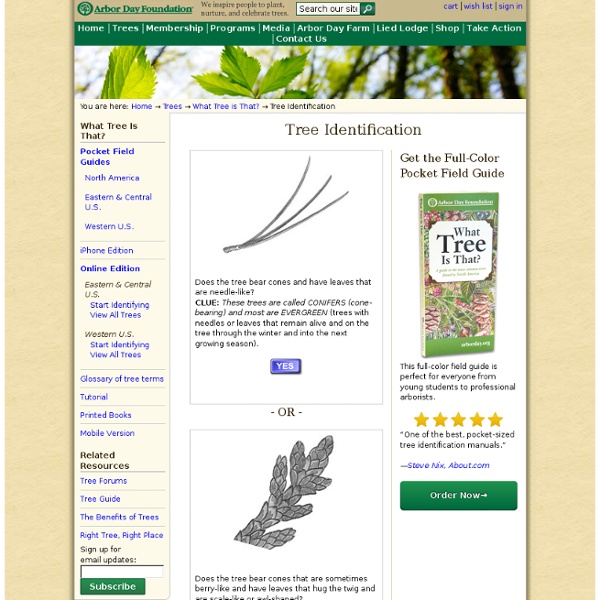



http://www.arborday.org/trees/whattree/whattree.cfm?itemid=e6a
Related: trees and landscapes • landscape • gardensTemperate Coniferous Forest Temperate evergreen forests are found predominantly in areas with warm summers and cool winters, and vary enormously in their kinds of plant life. In some, needleleaf trees dominate, while others are home primarily to broadleaf evergreen trees or a mix of both tree types. Temperate evergreen forests are common in the coastal areas of regions that have mild winters and heavy rainfall, or inland in drier climates or montane areas. Many species of trees inhabit these forests including pine, cedar, fir, and redwood. The understory also contains a wide variety of herbaceous and shrub species. Forest certification: a small step towards sustainability It can be hard to know whether the forest products you buy have been produced sustainably. Forestry certifications were established to give a bit more certainty, but what do they really mean? When you buy a certified product, are you necessarily helping the environment? A short history of certification The two international forestry certifications - Forest Stewardship Council (FSC) and Program for the Endorsement of Forest Certifications (PEFC) - have had an interesting history over the past 20 years. There are often clouded interpretations and miss-interpretations of how each came about.
How tall can a tree grow? - Valentin Hammoudi As explained in this lesson, at the base of the tree the phloem sap has delivered most of its sugar and is therefore quite watery. Just next to it, the xylem sap is rich in minerals, which were mostly absorbed by the roots. This unbalanced rate of water between phloem and xylem leads to water movement from the first one to the latter one, due to a phenomenon called osmosis. Unsurprisingly, a mirrored water exchange takes place at the top of the tree. Once it has delivered its nutrients and reached the tree’s top, the xylem sap is very watery, and by a similar osmotic movement, water goes from the xylem to the phloem enabling the production of new phloem sap. The water is then circulating in a partially closed circuit, with input from the roots and output from the leave.
Earth Floor: Biomes Deciduous Forest The mid-latitude deciduous forest biome is located between the polar regions and the tropics. Because of its location, air masses from both the cold polar region and the warm tropical region contribute to the changes of climate in this biome. Photo © 2000-www.arttoday.com Mid-latitude deciduous forests have both a warm and a cold season (see climograph). Precipitation ranges from 30 to 60 inches and is evenly distributed throughout the year.
UW - Brockman Memorial Tree Tour Dedication This tour is dedicated to the memory of Professor C. Frank Brockman (1902-1985), who capped an influential, productive career in forestry and outdoor recreation by producing in 1980 the original University of Washington tree tour. Edited by Louise M. Hastie, that eight-page publication featured 81 campus trees, and had to be reprinted by popular demand. Along with the tour, Brockman authored five articles about campus trees for the U.W. Deciduous Forest Deciduous biomes are located primarily in the eastern half of the United States, Canada, Europe, parts of Russia, China, and Japan. Climate The average temperature of the forest is about 50 degrees F. The average amount of rainfall in the forest is 30 to 60 inches a year.
Temperate Deciduous Forest The Temperate Deciduous Forest The temperate deciduous forest occupies much of the middle of the Whittaker diagram, and to those of us who live here, it sure feels that way. Rapid changes from cold and dry to wet and warm or to any of the other corners of the climate envelope are often swift and dramatic. A favorite saying among the natives is "if you don't like the weather, wait a minute". Of course, we are talking about climate here, not weather, but the principle remains. Forest*A*Syst Glossary of Common Forestry Terms Access road A temporary or permanent access route. Aesthetics An individual's appreciation of the forest landscape for its unique and varied components without regard to its utility or monetary value. Agroforestry The intentional act of combining agriculture and forestry to create integrated and sustainable land-use system. Alleycropping The planting of rows of trees and/or shrubs (single or multiple) at wide spacing, creating alleyways within which agricultural crops or horticultural crops are produced. Bedding A site preparation method using special equipment to form soil and forest litter into a ridge six to 10 inches high and 3 to 4 feet wide, on which tree seedlings are planted. Best Management Practices (BMP's) Effective economical practices associated with silvicultural operations that minimize nonpoint source pollution (soil erosion and stream sedimentation).
International Day of Happiness You might think the International Day of Happiness is a day to practise positive thinking or to give thanks for the things in your life that make you happy. But it's actually a United Nations project which has a more serious purpose. The UN thinks happiness will only be for everyone when the people of the world are equal. Glossary of Forest Engineering Terms Glossary of Forest Engineering Terms Index Foreword The terminology used in forest engineering and harvesting has evolved over many years, beginning with the early lumberjacks who cut trees for homes and industry.
How to regrow a forest: Get out of the way This story was produced in partnership with the Pulitzer Center on Crisis Reporting and the National Geographic Society. Imagine a black hole in the center of a green donut, Malcolm North said. A USDA forest ecologist in the Sierra Nevada of eastern California, North was at the center of a new experiment in forestry with global implications.